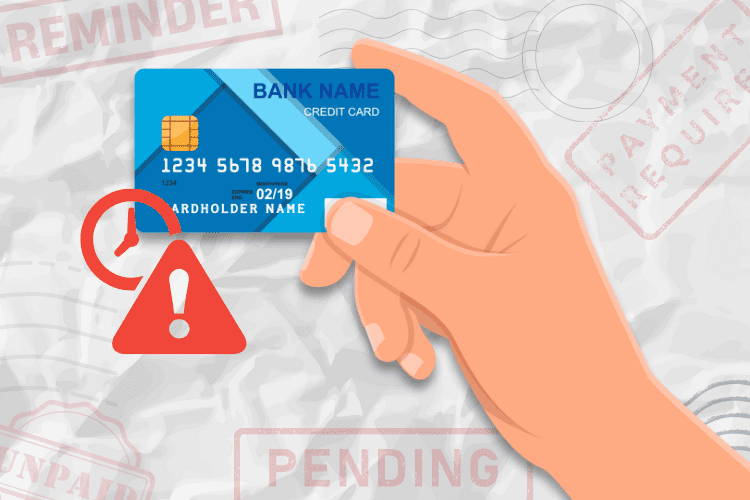How to Use Credit Card Balance Transfers to Give You a Boost With Your Investing

 Disclosure: We’re letting you know that this post contains sponsored links which The Smart Wallet receives compensation for, which may impact their order of appearance. This site doesn’t include all available offers.
Disclosure: We’re letting you know that this post contains sponsored links which The Smart Wallet receives compensation for, which may impact their order of appearance. This site doesn’t include all available offers.
If you have an interest in investing your money in the stock market, and you’re looking for a boost to get you started, a credit card balance transfer is one tool you can use to achieve that goal. The only requirements are that you have an active credit card that is not being used and a reliable source of income that you will use to pay off any debt incurred.
What are Balance Transfers?
A balance transfer is the transfer of money from one account to another. Banks and credit issuers will usually offer consumers favorable lending terms that make these types of transfers desirable. For example, a 0% APR for 12-24 months + 3%-5% transfer fee, are common. These terms will vary from bank to bank and are not always available for every credit card. Check with your specific bank for concrete terms and conditions applicable to you. Once the promotion period expires, any remaining debt will be subject to the credit issuer’s ordinary interest rate, which is usually very high.
How are Balance Transfers Used?
In practice, a consumer will typically transfer the balance of their credit card debt that is held by Bank A to their credit account held by Bank B. Sometimes banks will permit a balance transfer from a consumer’s credit account to their checking account, which allows the consumer to pay for bills or other expenses that cannot be directly charged to a credit card.
For consumers who seek to pay down existing credit card debt, balance transfers can provide temporary relief from the interest that would have accrued on their credit card balance prior to the transfer. If used strategically, and assuming no further debt is incurred, balance transfers can save consumers hundreds of dollars in interest over the life of the debt. Balance transfers can also be a very useful tool in case of an emergency or other expense that depletes or exceeds the balance of an emergency fund.
Why Use Balance Transfers For Investing?
The phrase “time in the market, beats timing the market” is an old adage that still applies today. But, when you are just starting off on your investing journey, it may feel insurmountable before you start seeing or feeling like you’ve made any progress or returns on your investments. This holds particularly true if you feel like your personal savings rate is starting off on the lower side. Do not let this deter you! Any amount saved is better than no amount saved, and one of the easiest ways to start is Acorns, a popular financial app that saves and invests your spare change behind the scenes.
However, regardless of your savings rate, a balance transfer allows you to take a loan against yourself, which in turn allows you to invest in the market immediately.
Hypothetical Growth With and Without a Balance Transfer After 24 Months
The below scenarios use a 24-month model, which is generally – but not always – the longest amount of time available for 0% APR promotion periods. In both scenarios, Sally’s investing balance starts at $0, and she anticipates a hypothetical return of 6% compounded monthly.
In Scenario A, Sally starts investing without using a balance transfer. She contributes $250 a month. After 24 months, she has invested $6,000 in total, and her account balance grows to approximately $6,357.99.
In Scenario B, Sally uses a balance transfer of $6,000. The bank charges her a 3% transfer fee, which costs $180, so her total debt is $6,180. For 24 months, Sally pays $257.50 a month to pay off the balance transfer before the 0% APR expires. After 24 months, Sally has paid off the balance transfer and her investing account grows to approximately $6,762.96.
This is a $373.17 difference between the two scenarios after the same amount of time. When accounting for the bank’s 3% fee, Sally is still ahead $193.17 in Scenario B by using a balance transfer to give her investing journey a boost.
Here Are A Few Apps To Get Started With Investing
Once you start saving $$$ on high interest after your balance transfer, you might want to take those savings to start investing. Check out the table below which features a number of awesome financial platforms where you can start investing in cryptocurrencies, stocks, and even real estate (just like “the 1%” does!):
| Platform | Founded | Best Reasons To Sign Up |
|---|---|---|
| Coinbase | 2012 | One of the largest cryptocurrency exchanges in the world. You'll get access to a wide variety of both common and uncommon cryptocurrencies. |
| Gemini | 2014 | The world's first licensed Ether (Ethereum) exchange. Start investing with as little as $5 and earn interest on certain cryptos. |
| Robinhood | 2015 | Commission-free trades on all cryptocurrencies, like Bitcoin and Ethereum, as well as stocks and ETFs. You can buy, sell, and hold cryptos and traditional investments all in one platform. |
| HappyNest | 2018 | A micro-investing platform that offers you the opportunity to invest in a REIT (real estate investment trust) with no platform or broker fees. |
The Bottom Line
This critical piece to making this method work is by paying off the balance transfer before the 0% interest promotion period expires. Failing to do this will result in additional interest fees incurred by the borrower, and will likely negate any gains achieved in the stock market. If you’re looking for ways to earn extra money so that you can stay on track with paying off your remaining balance while it’s not accruing interest, then Opinion Outpost can be a good option. Once you sign up, you’ll earn up to $5 for every survey you complete. You’ll earn enough to start investing in no time!
The next most important part of this method is investment selection. Even with a 0% APR promotion period, any balance transfer will be subject to the bank’s 3 – 5 % transfer fee. The investment selection should provide returns that will, at a minimum, meet and ideally exceed the total cost to borrow the funds. Otherwise, the potential gains may not outweigh the cost of incurring the debt in the first place.
Lastly, a balance transfer will result in an increase in total credit utilization, which may or may not impact your credit score. If you’re working on increasing your score, for any reason, you may want to forgo using a balance transfer and instead opt for direct investing instead.
Read More: Credit Card Interest Rates Are Rising: Now’s The Time To Pay Off Debt










